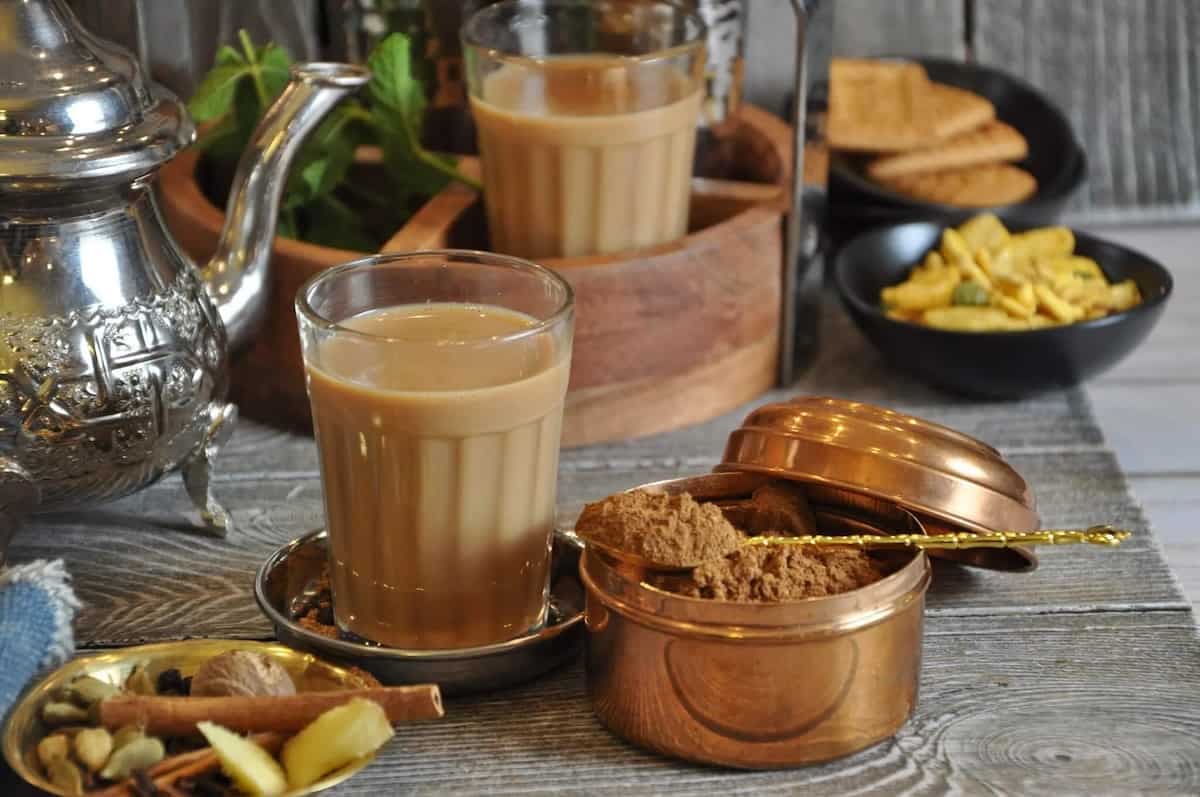Be it homemade or in the kitchens of popular cafes or dhabas, masala chai is a drink that speaks volumes about India’s collective love for tea. Traditionally poured into small glasses from metal kettles, the drink has been the lifeline of the country’s people for years. The aroma of cinnamon and cardamom that wafts out of glasses of masala chai as drinkers clink them against each other is telling of the love and effort that goes into making it. Milky water bubbles as processed tea leaves dance around in a metal pan or pot. The pot, with steam coming out of it, makes a good photo op, as do the crowds that gather around street stalls selling the beloved drink. Packets of Parle-G line these stalls, which customers buy hungrily and then dunk each biscuit into the steaming hot liquid.
Some people believe that masala chai was invented 9,000 years ago, while others believe it was created 5,000 years ago. There are a couple of stories about the drink’s origins: one of them says that it was invented in Thailand, and the other says that it was created in an ancient royal court in India. The common thread between both stories is that it was created by a king as an Ayurvedic beverage. It is believed that kadha, the hot drink made by brewing herbs and spices in boiling water, is the ancestor of masala chai. Kadha was mainly prized for its medicinal properties, in contrast to masala chai, which is known for its taste and rejuvenating effects.
Tea farms were set up in Assam by the British in 1835. The black teas that were produced at the farms began to be used in local masala chai recipes. This was when masala chai, complete with tea, milk, spices, and sugar, first appeared. However, tea was mainly an export item back then and proved too expensive for the masses.

The Indian Tea Association, which was owned by the British, began to promote Indian tea consumption in the country in the early 1990s. Since the price of black tea was high, vendors added milk, spices and sugar to their brews, both for flavour and to manage costs. Thereafter, masala chai became popular.
During the 1960s, masala chai’s popularity soared further when CTC, a mechanized form of tea production, made black tea affordable for the Indian masses. CTC tea had a robust flavor that made it the ideal base for masala chai’s sweet and spicy notes. This is why CTC masala chai is considered a staple in many parts of the country.
Slowly, chai wallahs appeared to make and serve chai to the public at humble prices. They set up shop in streets and at railway stations, offering a much needed kick of energy to passersby and travellers. And so, chai began to be woven into the cultural fabric of the country.
It has been estimated that some people drink four small cups of chai per day. Chai time is one of the most cherished times of the day, when workers take a break from a busy day to indulge in some sweet comfort. Accompanied by sweet or savoury snacks, a cup or glass of masala chai has the potential to cure anything, from a cold to cold feet.


